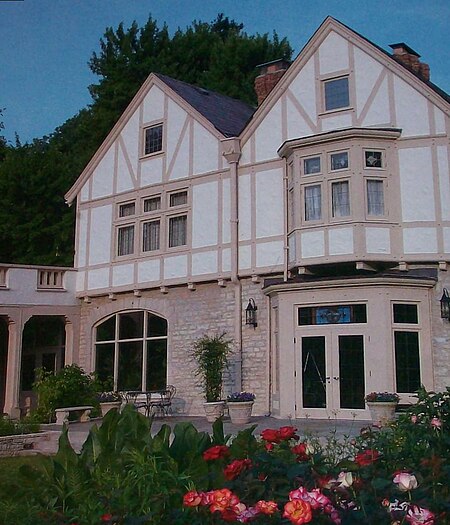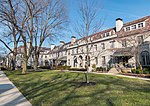Ohio Governor's Mansion

The Ohio Governor's Residence and Heritage Garden is the official residence of the governor of Ohio. The residence was built during 1923–1925 by industrialist Malcolm D. Jeffrey and has served as the official home of the governor since 1957. The mansion is located at 358 North Parkview Avenue in Bexley, a suburb and enclave of the state capital, Columbus. It is only one of four official state governor's residences in the country that is not located within its state's capital (the others being Drumthwacket, located in Princeton, New Jersey, instead of Trenton; the Wisconsin Governor's Mansion, located in Maple Bluff, instead of Madison; and the Tennessee Governor's Mansion, located in Oak Hill instead of Nashville, Tennessee).
Excerpt from the Wikipedia article Ohio Governor's Mansion (License: CC BY-SA 3.0, Authors, Images).Ohio Governor's Mansion
Parkview Avenue,
Geographical coordinates (GPS) Address Nearby Places Show on map
Geographical coordinates (GPS)
| Latitude | Longitude |
|---|---|
| N 39.976388888889 ° | E -82.940277777778 ° |
Address
Parkview Avenue 350
43209
Ohio, United States
Open on Google Maps





